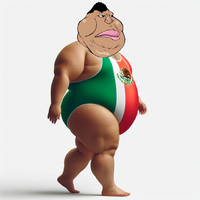Soynic Hedgehog
I like FNF like having fun
- Joined
- Jun 5, 2024
- Messages
- 3,583
>See video seemingly debunking/challenging the idea that native americans were perfect natural stewards
>Click it
>Instant bombing with leftist retard language while man insists that he is in fact a centrist you guys!
>Starts quoting genisis part about dominion over animals with a voice filter and lord of the rings evil wizard scene overlayed over his footage
>Calls genisis part some kind of 4chan manifesto
>Video goes on with, okay, maybe the native americans do a little bad but ONLY the men, and its actually a patriarchal thing. Also colonism and critical theory is the root of all evil.
Thats what I get for trying to branch out on youtube I guess. Good god.
I fucking hate niggers that try to lure you in by questioning one strawman of the leftist mindset, then reveal they are just some faggot like vaush or destiny who is still a raging ideologue but "not like the other leftists you guys!"
>Click it
>Instant bombing with leftist retard language while man insists that he is in fact a centrist you guys!
>Starts quoting genisis part about dominion over animals with a voice filter and lord of the rings evil wizard scene overlayed over his footage
>Calls genisis part some kind of 4chan manifesto
>Video goes on with, okay, maybe the native americans do a little bad but ONLY the men, and its actually a patriarchal thing. Also colonism and critical theory is the root of all evil.
Thats what I get for trying to branch out on youtube I guess. Good god.
I fucking hate niggers that try to lure you in by questioning one strawman of the leftist mindset, then reveal they are just some faggot like vaush or destiny who is still a raging ideologue but "not like the other leftists you guys!"


